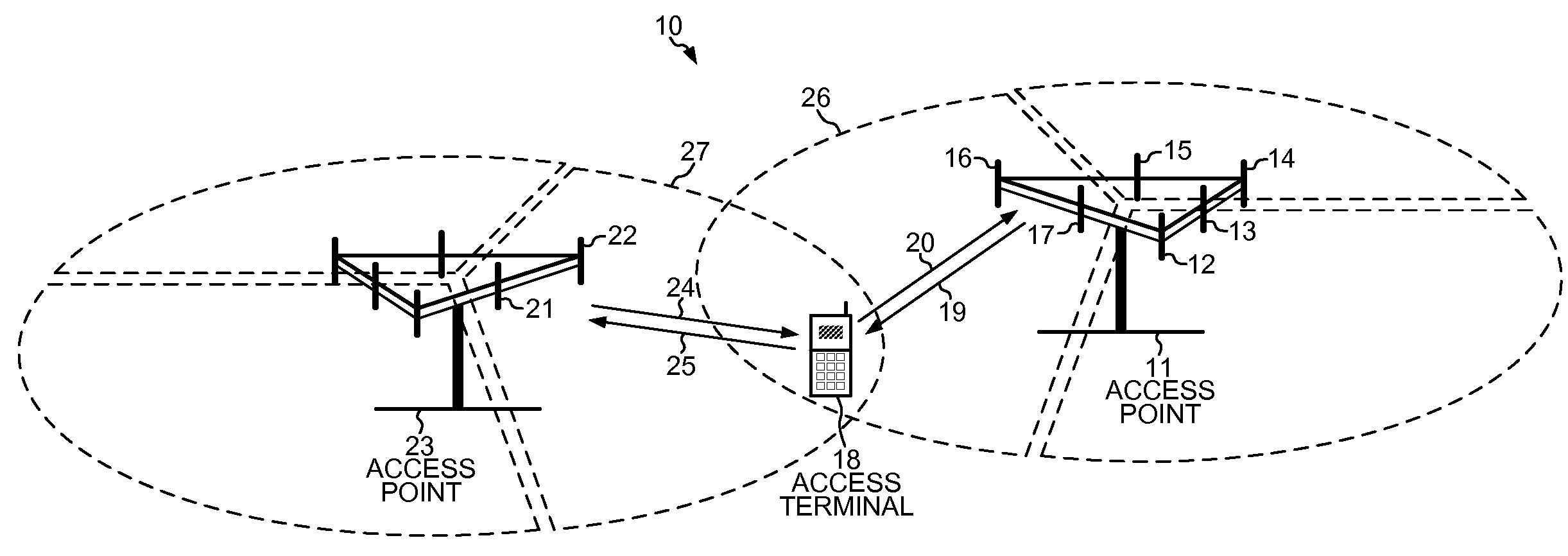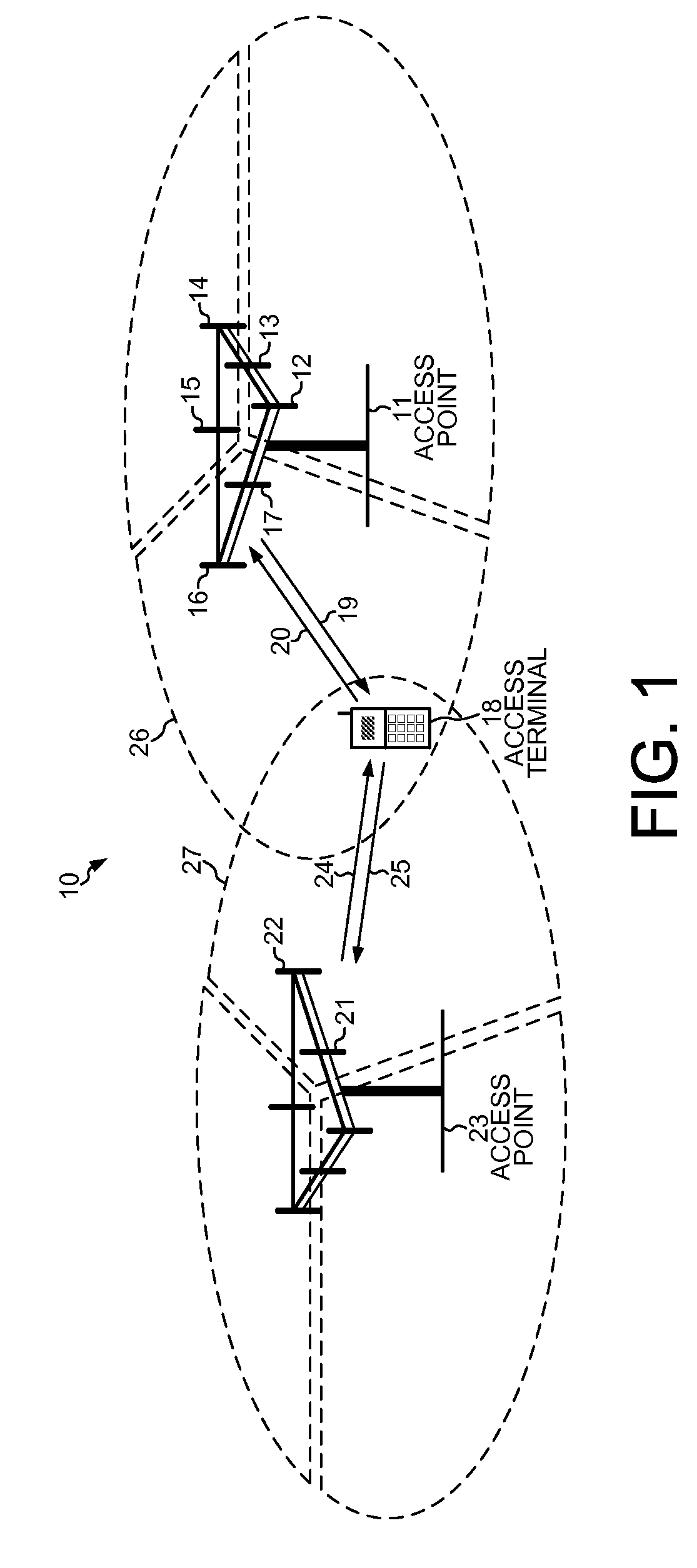Reference signal management in mobile systems
a reference signal and mobile system technology, applied in power management, wireless commuication services, high-level techniques, etc., can solve the problems of consuming power, unable to meet the needs of users, so as to prevent unnecessary handoff, avoid unnecessary handoff, and efficiently use reference signals
- Summary
- Abstract
- Description
- Claims
- Application Information
AI Technical Summary
Benefits of technology
Problems solved by technology
Method used
Image
Examples
Embodiment Construction
[0020]The techniques described herein are advantageously applied in heterogeneous network environments in which multiple wireless communication networks implement different radio technologies. For example, the multiple wireless communication networks may use various modulation techniques, such as Code Division Multiple Access (CDMA), Time Division Multiple Access (TDMA), Frequency Division Multiple Access (FDMA), Orthogonal FDMA (OFDMA), and Single-Carrier FDMA (SC-FDMA). A CDMA network may implement radio technologies such as Universal Terrestrial Radio Access (UTRA) and cdma2000. UTRA includes Wideband-CDMA (W-CDMA) and Low Chip Rate (LCR). cdma2000 covers the IS-2000, IS-95 and IS-856 standards. A TDMA network may implement a radio technology such as Global System for Mobile Communications (GSM). An OFDMA network may implement a radio technology such as Evolved UTRA (E-UTRA), IEEE 802.11, IEEE 802.16, IEEE 802.20 and Flash-OFDM. UTRA, E-UTRA, and GSM are part of Universal Mobile ...
PUM
 Login to View More
Login to View More Abstract
Description
Claims
Application Information
 Login to View More
Login to View More - R&D
- Intellectual Property
- Life Sciences
- Materials
- Tech Scout
- Unparalleled Data Quality
- Higher Quality Content
- 60% Fewer Hallucinations
Browse by: Latest US Patents, China's latest patents, Technical Efficacy Thesaurus, Application Domain, Technology Topic, Popular Technical Reports.
© 2025 PatSnap. All rights reserved.Legal|Privacy policy|Modern Slavery Act Transparency Statement|Sitemap|About US| Contact US: help@patsnap.com



